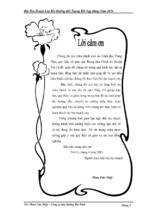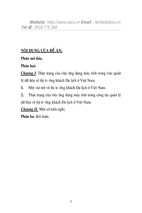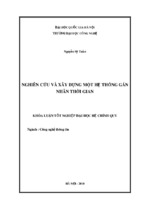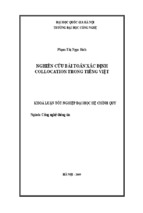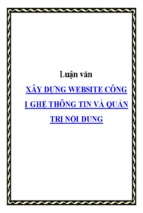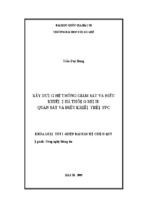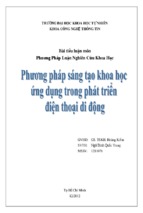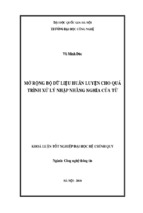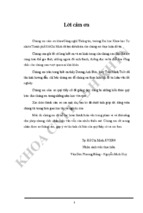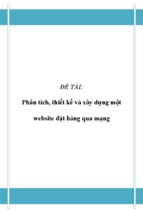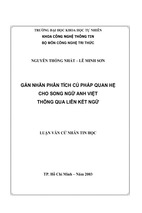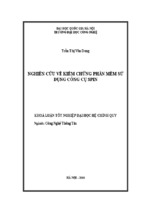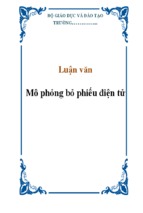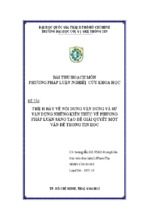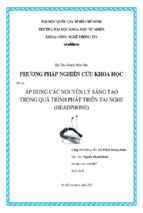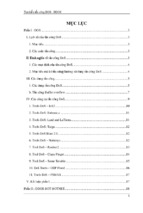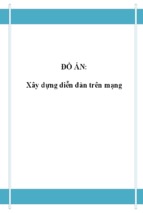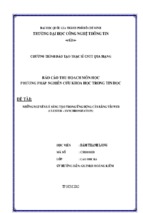Nessus Compliance Checks
Auditing System Configurations and Content
August 30, 2012
(Revision 61)
Copyright © 2002-2012 Tenable Network Security, Inc. Tenable Network Security, Nessus and ProfessionalFeed are registered trademarks of Tenable
Network Security, Inc. Tenable, the Tenable logo, the Nessus logo, and/or other Tenable products referenced herein are trademarks of Tenable
Network Security, Inc., and may be registered in certain jurisdictions. All other product names, company names, marks, logos, and symbols
may be the trademarks of their respective owners.
Tenable Network Security, Inc. • 7063 Columbia Gateway Drive, Suite 100, Columbia, MD 21046 • 410.872.0555 •
[email protected] • www.tenable.com
Table of Contents
Introduction ............................................................................................................................... 4
Prerequisites .............................................................................................................................. 4
Nessus ProfessionalFeed and SecurityCenter Customers ......................................................... 4
Standards and Conventions ....................................................................................................... 4
Compliance Standards ............................................................................................................... 5
Configuration Audits, Data Leakage and Compliance ................................................................ 6
What is an audit? ................................................................................................................... 6
Audit vs. Vulnerability Scan ................................................................................................... 6
Example Audit Items .............................................................................................................. 6
Windows ............................................................................................................................................. 7
Unix .................................................................................................................................................... 7
Cisco................................................................................................................................................... 8
IBM iSeries ......................................................................................................................................... 8
Databases .......................................................................................................................................... 8
Audit Reports ......................................................................................................................... 9
Technology Required ................................................................................................................. 9
Unix and Windows Configuration Compliance .nbin Nessus Plugins ..................................... 9
Windows Content Compliance .nbin Nessus Plugin ..............................................................10
Database Compliance .nbin Nessus Plugin ..........................................................................10
IBM iSeries Compliance .nbin Nessus Plugin .......................................................................10
Cisco Compliance .nbin Nessus Plugin.................................................................................10
Audit Policies ........................................................................................................................10
Helpful Utilities ......................................................................................................................11
Unix or Windows Nessus Scanners ......................................................................................11
Credentials for Devices to be Audited ...................................................................................11
Using “su”, “sudo” and “su+sudo” for Audits..........................................................................12
sudo Example................................................................................................................................... 12
su+sudo Example ............................................................................................................................. 13
Important Note Regarding sudo ....................................................................................................... 14
Cisco IOS Example: ......................................................................................................................... 15
Converting Windows .inf Files to .audit Files with i2a ...........................................................16
Obtaining and Installing the Tool ...............................................................................................16
Converting the .inf to .audit .......................................................................................................16
Analyzing the Conversion .........................................................................................................16
Correct .inf Setting Format ........................................................................................................16
Converting Unix Configuration Files to .audit Files with c2a ................................................19
Obtaining and Installing the Tool ...............................................................................................19
Create a MD5 Audit File ............................................................................................................20
Create Audit File Based on One or More Configuration Files ....................................................20
Creating a MAP File ..................................................................................................................21
Other Uses for the c2a Tool ......................................................................................................22
Manual Tweaking of the .audit Files ..........................................................................................22
Converting Unix Package Lists to .audit Files with p2a ........................................................23
Obtaining and Installing the Tool ...............................................................................................23
Copyright © 2002-2012 Tenable Network Security, Inc.
2
Usage ...................................................................................................................................24
Create Output File Based on all Installed Packages ..................................................................24
Create Output File Based on Package List and Send to the Screen..........................................24
Create Audit File Based on a Specified Input File .....................................................................24
Example Nessus User Interface Usage ...................................................................................25
Obtaining the Compliance Checks ............................................................................................25
Configuring a Scanning Policy ..................................................................................................25
Performing a Scan ....................................................................................................................28
Example Results .......................................................................................................................29
Example Nessus for Unix Command Line Usage ..................................................................29
Obtaining the Compliance Checks ............................................................................................29
Using .nessus Files ...................................................................................................................30
Using .nessusrc Files ................................................................................................................30
Performing a Scan ....................................................................................................................31
Example Results .......................................................................................................................31
SecurityCenter Usage ..............................................................................................................32
Obtaining the Compliance Checks ............................................................................................32
Configuring a Scan Policy to Perform a Compliance Audit ........................................................32
Managing Credentials ...............................................................................................................35
Analyzing the Results................................................................................................................35
For Further Information ...........................................................................................................37
About Tenable Network Security .............................................................................................38
Copyright © 2002-2012 Tenable Network Security, Inc.
3
INTRODUCTION
This document describes how Nessus 5.x can be used to audit the configuration of Unix,
Windows, database, SCADA, IBM iSeries, and Cisco systems against a compliance policy as
well as search the contents of various systems for sensitive content.
The phrases “Policy Compliance” and “Compliance Checks” are used
interchangeably within this document.
SCADA system auditing is possible with Nessus; however this functionality is
outside of the scope of this document. Please reference the Nessus.org SCADA
information page here for more information.
Performing a compliance audit is not the same as performing a vulnerability scan, although
there can be some overlap. A compliance audit determines if a system is configured in
accordance with an established policy. A vulnerability scan determines if the system is open
to known vulnerabilities. Readers will learn the types of configuration parameters and
sensitive data that can be audited, how to configure Nessus to perform these audits and
how Tenable’s SecurityCenter can be used to manage and automate this process.
PREREQUISITES
This document assumes some level of knowledge about the Nessus vulnerability scanner.
For more information on how Nessus can be configured to perform local Unix and Windows
patch audits, please refer to the paper “Nessus Credentials Checks for Unix and Windows”
available at http://www.tenable.com/products/nessus/documentation.
NESSUS PROFESSIONALFEED AND SECURITYCENTER CUSTOMERS
Users must be subscribed to the Nessus ProfessionalFeed or use SecurityCenter to perform
the compliance checks described in this paper. Both are available from Tenable Network
Security (http://www.tenable.com/). A more detailed list of the technical requirements to
perform the audit checks is discussed in the next few chapters.
STANDARDS AND CONVENTIONS
Throughout the documentation, filenames, daemons and executables are indicated with a
courier bold font.
Command line options and keywords are also indicated with the courier bold font.
Command line examples may or may not include the command line prompt and output text
from the results of the command. Command line examples will display the command being
run in courier bold to indicate what the user typed while the sample output generated by
the system will be indicated in courier (not bold). Following is an example running of the
Unix pwd command:
# pwd
/home/test/
#
Copyright © 2002-2012 Tenable Network Security, Inc.
4
Important notes and considerations are highlighted with this symbol and grey text
boxes.
Tips, examples, and best practices are highlighted with this symbol and white on
blue text.
COMPLIANCE STANDARDS
There are many different types of government and financial compliance requirements. It is
important to understand that these compliance requirements are minimal baselines that can
be interpreted differently depending on the business goals of the organization. Compliance
requirements must be mapped with the business goals to ensure that risks are appropriately
identified and mitigated. For more information on developing this process, please refer to
the Tenable paper “Maximizing ROI on Vulnerability Management” located at
http://www.tenable.com/expert-resources/whitepapers.
For example, a business may have a policy that requires all servers with customer
personally identifiable information (PII) on them to have logging enabled and minimum
password lengths of 10 characters. This policy can help in an organization’s efforts to
maintain compliance with any number of different regulations.
Common compliance regulations and guides include, but are not limited to:
>
>
>
>
>
>
>
>
>
>
>
>
>
>
>
>
>
BASEL II
Center for Internet Security Benchmarks (CIS)
Control Objectives for Information and related Technology (COBIT)
Defense Information Systems Agency (DISA) STIGs
Federal Information Security Management Act (FISMA)
Federal Desktop Core Configuration (FDCC)
Gramm-Leach-Bliley Act (GLBA)
Health Insurance Portability and Accountability Act (HIPAA)
ISO 27002/17799 Security Standards
Information Technology Information Library (ITIL)
National Institute of Standards (NIST) configuration guidelines
National Security Agency (NSA) configuration guidelines
Payment Card Industry Data Security Standards (PCI DSS)
Sarbanes-Oxley (SOX)
Site Data Protection (SDP)
United States Government Configuration Baseline (USGCB)
Various State Laws (e.g., California’s Security Breach Notification Act - SB 1386)
These compliance checks also address real-time monitoring such as performing intrusion
detection and access control. For a more in depth look at how Tenable’s configuration
auditing, vulnerability management, data leakage, log analysis and network monitoring
solutions can assist with the mentioned compliance regulations, please email
[email protected] to request a copy of the “Real-Time Compliance Monitoring” paper.
Copyright © 2002-2012 Tenable Network Security, Inc.
5
CONFIGURATION AUDITS, DATA LEAKAGE AND COMPLIANCE
What is an audit?
Nessus can be used to log into Unix and Windows servers, Cisco devices, SCADA systems,
IBM iSeries servers, and databases to determine if they have been configured in accordance
to the local site security policy. Nessus can also search the entire hard drive of Windows and
Unix systems, for unauthorized content.
It is important that organizations establish a site security policy before performing an audit
to ensure assets are appropriately protected. A vulnerability assessment will determine if
the systems are vulnerable to known exploits but will not determine, for example, if
personnel records are being stored on a public server.
There is no absolute standard on security – it is a question of managing risk and this varies
between organizations.
For example, consider the password requirements such as minimum/maximum password
ages and account lockout policies. There may be very good reasons to change passwords
frequently or infrequently. There may also be very good reasons to lock an account out if
there have been more than five login failures, but if this is a mission critical system, setting
something higher might be more prudent or even disabling lockouts altogether.
These configuration settings have much to do with system management and security policy,
but not specifically system vulnerabilities or missing patches. Nessus can perform
compliance checks for Unix and Windows servers. Policies can be either very simple or very
complex depending on the requirements of each individual compliance scan.
Audit vs. Vulnerability Scan
Nessus can perform vulnerability scans of network services as well as log into servers to
discover any missing patches. However, a lack of vulnerabilities does not mean the servers
are configured correctly or are “compliant” with a particular standard.
The advantage of using Nessus to perform vulnerability scans and compliance audits is that
all of this data can be obtained at one time. Knowing how a server is configured, how it is
patched and what vulnerabilities are present can help determine measures to mitigate risk.
At a higher level, if this information is aggregated for an entire network or asset class (as
with Tenable’s SecurityCenter), security and risk can be analyzed globally. This allows
auditors and network managers to spot trends in non-compliant systems and adjust controls
to fix these on a larger scale.
Example Audit Items
The sections below discuss configuration audits on Windows, Unix, databases, IBM iSeries,
and Cisco systems.
The Nessus 5 regex engine is based on a Perl dialect and considered “Extended
POSIX”, due to its flexibility and speed.
Copyright © 2002-2012 Tenable Network Security, Inc.
6
Windows
Nessus can test for any setting that can be configured as a “policy” under the Microsoft
Windows framework. There are several hundred registry settings that can be audited and
the permissions of files, directories and objects can also be analyzed. A partial list of
example audits includes testing the settings of the following:
>
>
>
>
Account lockout duration
Retain security log
Allow log on locally
Enforce Password History
Following is an example “audit” item for Windows servers:
-
name: "Minimum password length"
value: 7
This particular audit looks for the setting “Minimum password length” on a Windows server
and generates an alert if the value is less than seven characters.
Nessus can also search Windows computers for sensitive data. Following is an example that
searches for Visa credit card numbers in a variety of file formats:
-
type: FILE_CONTENT_CHECK
description: "Determine if a file contains a valid VISA Credit Card
Number"
file_extension: "xls" | "pdf" | "txt"
regex: "([^0-9-]|^)(4[0-9]{3}( |-|)([0-9]{4})( |-|)([0-9]{4})( |-|)([09]{4}))([^0-9-]|$)"
expect: "VISA" | "credit" | "Visa" | "CCN"
max_size: "50K"
only_show: "4"
This check looks at Excel, Adobe and text files for patterns that indicate one or more valid
Visa credit card numbers are present.
Unix
Nessus can broadly be used to test for permissions of files, content of a file, running
processes and user access control for a variety of Unix-based systems. Currently, checks
are available to audit Solaris, Red Hat, AIX, HP-UX, SuSE, Gentoo, and FreeBSD derivatives
of Unix.
-
name: "min_password_length"
description: "Minimum password length"
value: "14..MAX"
Copyright © 2002-2012 Tenable Network Security, Inc.
7
This audit checks whether the minimum password length on a Unix system is 14 characters.
Cisco
Nessus can test the running configuration for systems running the Cisco IOS operating
system and confirm that it is in accordance with security policy standards. Checks can be
performed via a non-privileged login or one utilizing the privileged “enable” password.
-
type: CONFIG_CHECK
description: "Require AAA service"
info: "Verify centralized authentication, authorization and accounting"
info: "(AAA)service (new-model) is enabled."
item: "aaa new-model"
IBM iSeries
Using supplied credentials, Nessus can test the configuration for systems running IBM
iSeries and confirm that it is in accordance with security policy standards.
type: AUDIT_SYSTEMVAL
systemvalue: "QALWUSRDMN"
description: "Allow User Domain Objects (QALWUSRDMN) – ‘*all’"
value_type: POLICY_TEXT
value_data: "*all"
info: "\nref :
http://publib.boulder.ibm.com/infocenter/iseries/v5r4/topic/books/sc
415302.pdf pg. 21"
Databases
Nessus can be configured to log into the following database types and determine local
security policy compliance:
>
>
>
>
>
>
SQL Server
Oracle
MySQL
PostgreSQL
DB2
Informix/DRDA
In general Tenable recommends running a database compliance scan with a user having
SYSDBA privileges for Oracle, “sa” or an account with sysadmin server role for MS-SQL, and
DB2 instance user account for DB2 to ensure completeness of the report as some system or
hidden tables and parameters can only be accessed by an account with such privileges. Note
that for Oracle, in most cases a user assigned the DBA role will perform most of the checks
in Tenable audits, but some checks will report errors because of insufficient access
privileges. This same argument is applicable to other databases as well; a lesser privilege
Copyright © 2002-2012 Tenable Network Security, Inc.
8
account could be used for database auditing but the downside is a complete report cannot
be ensured.
Database audits are normally comprised of select statements that retrieve security-related
details from your database such as the existence or status of insecure stored procedures.
Here is an example that determines if the potentially dangerous “xp_cmdshell” stored
procedure is enabled:
type: SQL_POLICY
description: "xp_cmdshell option"
info: "The xp_cmdshell extended stored procedures allows execution of
host executables outside the controls of database access
permissions and may be exploited by malicious users."
info: "Checking that the xp_cmdshell stored procedure is set to '0'"
sql_request: "select value_in_use from sys.configurations where name =
'xp_cmdshell'"
sql_types: POLICY_INTEGER
sql_expect: "0"
The ability to write audit files for each organization and search for sensitive data is very
useful. This document describes how to create custom policies to look for various types of
data.
Audit Reports
When an audit is performed, Nessus attempts to determine if the host is compliant, noncompliant or if the results are inconclusive.
Compliant results in Nessus are logged as a “Note” severity level, non-compliant results are
logged as a “Hole” and inconclusive test results (e.g., a permissions check for a file that is
not found on the system) are reported as a “Warning”. Tenable’s SecurityCenter uses a
“low”, “medium” and “high” severity rating; compliant checks rate as “low”, non-compliant
as “high” and inconclusive as “medium”.
Unlike a vulnerability check that only reports if the vulnerability is actually present, a
compliance check always reports something. This way, the data can be used as the basis of
an audit report to show that a host passed or failed a specific test, or if it could not be
properly tested.
TECHNOLOGY REQUIRED
Unix and Windows Configuration Compliance .nbin Nessus Plugins
Tenable has authored two Nessus plugins (IDs 21156 and 21157) that implement the APIs
used to perform audits against Unix and Windows systems. The plugins have been precompiled with the Nessus “.nbin” format.
These plugins and the corresponding audit policies are available to ProfessionalFeed
customers and SecurityCenter users. This paper also discusses two Windows tools to help
create custom Windows .audit files and one tool for Unix to create Unix .audit files.
Copyright © 2002-2012 Tenable Network Security, Inc.
9
For Unix compliance audits, only SSH authentication is supported. Legacy
protocols such as Telnet are not permitted for security reasons.
Windows Content Compliance .nbin Nessus Plugin
Tenable has authored a Nessus plugin (ID 24760) named “Windows File Contents Check”
that implement the APIs used to audit Windows systems for non-compliant content such as
PII (Personally Identifiable Information) or PHI (Protected Health Information). The plugins
are pre-compiled with the Nessus “.nbin” format. The plugins and corresponding audit
policies are available to ProfessionalFeed customers and SecurityCenter users.
Note that Unix systems are not scanned by plugin 24760.
Database Compliance .nbin Nessus Plugin
Tenable has authored a Nessus plugin (ID 33814) named “Database Compliance Checks”
that implements the APIs used to audit various database systems. The plugin is precompiled with the Nessus “.nbin” format. The plugin and corresponding audit policies are
available to ProfessionalFeed customers and SecurityCenter users.
Database compliance checks are not available for use with Security Center
version 3.4.3 and earlier.
IBM iSeries Compliance .nbin Nessus Plugin
Tenable has authored a Nessus plugin (ID 57860) named “IBM iSeries Compliance Checks”
that implements the APIs used to audit systems running IBM iSeries. This plugin is precompiled with the Nessus “.nbin” format. The plugin and corresponding audit policies are
available to ProfessionalFeed customers.
Cisco Compliance .nbin Nessus Plugin
Tenable has authored a Nessus plugin (ID 46689) named “Cisco IOS Compliance Checks”
that implements the APIs used to audit systems running the CISCO IOS operating system.
This plugin is pre-compiled with the Nessus “.nbin” format. The plugin and corresponding
audit policies are available to ProfessionalFeed customers. This compliance check can be run
against a Saved, Running or Startup configuration.
Audit Policies
Tenable has developed a number of different audit policies for Unix, Windows and Cisco
platforms. These are available as .audit text files to ProfessionalFeed subscribers and can
be downloaded from the Tenable Support Portal located at
https://support.tenable.com/support-center/. For the latest news regarding Tenable’s auditing
functionality and all of the latest .audit file releases, please see the Discussion Forums:
https://discussions.nessus.org/.
Many aspects of common compliance audits such as the requirements of SOX, FISMA, and
PCI DSS have been considered while writing these audit policies, though they are not
represented as official audit files for these criteria. Users are encouraged to review these
.audit policies and customize these checks for their local environment. Users may rename
Copyright © 2002-2012 Tenable Network Security, Inc.
10
the .audit files to suit local descriptions. Other .audit policies come directly from
recommended configuration settings by CERT, CIS, NSA, and NIST.
Tenable expects to author several different types of .audit files based on customer
feedback and evolving “best practices”. Several consulting organizations and Tenable
customers have also begun to implement their own .audit policies and have expressed
interest to share these with other Nessus ProfessionalFeed users. An easy way to share
.audit policies or just interact with the Nessus community is through the Tenable Network
Security Discussion Forums at https://discussions.nessus.org/.
Helpful Utilities
Tenable has developed a tool to convert .inf files to Nessus .audit files to perform
Windows audits. This tool is named i2a and is also discussed later in this document.
There are two Unix tools that can be used to create Unix .audit files. The first tool, named
c2a (for “configuration to audit”), can be used to create Unix .audit files directly from
existing configuration files. For example, if your Sendmail configuration file is configured
correctly according to your site policy, the c2a tool can create an audit policy based on the
MD5 checksum of the file or based on specific value and argument pairs in the sendmail.cf
file. The second tool, named p2a (for “package to audit”), can be used to create Unix
.audit files from either the base package set on a Unix (RPM-based Linux or Solaris 10)
system or from a flat text file with a list of package names.
Unix or Windows Nessus Scanners
A variety of platforms can be used to run compliance checks and generally, the underlying
operating system that Nessus resides on does not matter. You can perform compliance
audits of a Windows 2003 server from an OS X laptop and you can also audit a Solaris
server from a Windows laptop.
Credentials for Devices to be Audited
In all cases, Unix SSH, Windows Domain, IBM iSeries, Cisco IOS, or database credentials
are required for Nessus to log into the target servers. In most cases, this user must be a
“Super user” or be a regular user with privilege escalation ability (e.g., sudo, su or
su+sudo). If the user performing the audit does not have “Super user” privileges, many of
the remote system commands will not be able to be run or will return incorrect results.
The Windows account used for sign-on credentials must have permission to read the local
machine policy. If a target host does not participate in a Windows domain then the account
must be a member of the host’s administrators group. If the host participates in a domain,
then the domain’s administrator group will be a member of the host’s administrators group
and the account will have access to the local machine policy if it is a member of the
domain’s administrator group.
To perform Windows content compliance checks, in addition to logging in to the system with
domain privileges, access to the Windows Management Instrumentation (WMI) must also be
allowed. If this access is not available, Nessus will state that WMI access was not available
for the scan.
Database compliance checks require only the database credentials to perform a full
database compliance audit. This is because the database, not the host operating system, is
being scanned for compliance.
Copyright © 2002-2012 Tenable Network Security, Inc.
11
Cisco IOS compliance checks typically require the “enable” password to perform a full
compliance audit of the system configuration. This is because Nessus is auditing the output
of the “show config” command, available only to a privileged user. If the Nessus user being
used for the audit already has “enable” privileges, the “enable” password is not required.
For more information on configuring Nessus or SecurityCenter to perform local credentialed
vulnerability checks, please refer to the “Nessus Credentials Checks for Unix and Windows”
paper available at http://www.tenable.com/products/nessus/documentation .
Using “su”, “sudo” and “su+sudo” for Audits
Use “su+sudo” in cases where company policy prohibits Nessus from logging into a
remote host with the root user or a user with “sudo” privileges. On remote login,
the non-privileged Nessus user can “su” (switch user) to one with sudo privileges.
The most effective Unix credentialed scans are those when the supplied credentials have
“root” privileges. Since many sites do not permit a remote login as root, Nessus users can
now invoke “su”, “sudo”, or “su+sudo” with a separate password for an account that has
been set up to have the appropriate privileges.
In addition, if an SSH known_hosts file is available and provided as part of the scan policy,
Nessus will only attempt to log into hosts in this file. This ensures that the same username
and password you are using to audit your known SSH servers is not used to attempt a login
to a system that may not be under your control.
sudo Example
An example screen capture of using “sudo” in conjunction with SSH keys follows. For this
example, the user account is “audit”, which has been added to the /etc/sudoers file on the
system to be scanned. The password provided is the password for the “audit” account, not
the root password. The SSH keys correspond with keys generated for the “audit” account:
Copyright © 2002-2012 Tenable Network Security, Inc.
12
su+sudo Example
With the release of Nessus 4.2.2, a new method of credential elevation has been included
for Unix-based hosts that have sudo installed: “su+sudo.” This method allows you to provide
credentials for an account that does not have sudo permissions, su to a user account that
does and then issue the sudo command.
This configuration provides greater security for your credentials during scanning, and
satisfies compliance requirements for many organizations.
To enable this feature, simply select “su+sudo” in the “Elevate privileges with” section
under the credentials/SSH settings as shown in the following screen capture:
Copyright © 2002-2012 Tenable Network Security, Inc.
13
In the “SSH user name”, and “SSH password” fields, enter the credentials that do not have
sudo privileges. In the example above, the user account is “raven.” From the “Elevate
privileges with” pull-down menu, select “su+sudo”. In the “su login” and “Escalation
password” fields enter the user name and password that do have privileged credentials, in
this example “sumi”. No other scan policy changes are required.
Important Note Regarding sudo
When auditing Unix systems via su, sudo or su+sudo, please keep the following items in
mind:
> If your Unix system has been hardened to limit which commands can be executed via
sudo or files accessed by remote users, this may affect your audit. Compare non-root
audits with a root audit if you suspect the audit is being limited by security measures.
> The sudo command is not native to Solaris and needs to be downloaded and installed if
your target system is running Solaris. Make sure the sudo binary is accessible as
“/usr/bin/sudo”.
> When scanning with known_hosts, the Nessus scan still needs to specify a host to be
scanned as well. For example, if you scanned a class C but uploaded a known_hosts file
that only contained 20 individual hosts within that class C, Nessus would just scan those
hosts in the file.
> Some Unix-based configurations have a requirement that sudo-initiated commands be
performed from tty sessions. Nessus vulnerability scans performed with the “su+sudo”
option do not match that requirement. If you are using the “su+sudo” option you will
need to create an exception on the target system. To determine if this is the case for
your Unix distribution, enter the following command as root on the system you will be
scanning:
Copyright © 2002-2012 Tenable Network Security, Inc.
14
# grep requiretty `locate sudoers` | grep -v "#" | grep /etc
If the “requiretty” line is in the sudoers configuration file, an exception to this rule will
need to be made to the /etc/sudoers file as follows:
Defaults
requiretty
Defaults:{userid} !requiretty
Note that {userid} is the username that will be used to execute the “sudo” command
(the “su login” page in the credentials/SSH section of your policy). Also make sure you
have the following line in your sudoers file:
{userid}
ALL=(ALL)
ALL
Again, {userid} is the username that will be used to execute the “sudo” command (the
“su login” in the credentials/SSH section of your policy).
Cisco IOS Example:
Only SSH authentication is supported. Legacy IOS devices requiring Telnet for
authentication cannot be scanned with Nessus Cisco compliance checks.
The Cisco IOS credentials are configured via the “SSH settings” credential screen in the
Nessus user interface. Enter the SSH username and password required to log into the Cisco
router. To specify that privileges must be elevated with “Enable”, choose “Cisco ‘enable’”
next to the “Elevate privileges with” setting and enter the enable password next to
“Escalation password”.
Copyright © 2002-2012 Tenable Network Security, Inc.
15
CONVERTING WINDOWS .INF FILES TO .AUDIT FILES WITH
I2A
If you or your IT organization has possession of Windows policy files (commonly found with
the “.inf” extension) these can be converted into .audit files for use in Nessus audits of
Windows servers.
OBTAINING AND INSTALLING THE TOOL
The i2a tool is available as a zip file and can be obtained from the Tenable Support Portal
located at https://support.tenable.com/support-center/. This tool does not use a GUI and is run
from the command line.
Extract the contents of the file into a directory of your choosing and then move your
Windows .inf files into the same directory.
CONVERTING THE .INF TO .AUDIT
Run the conversion tool from the command prompt by simply typing:
# i2a-x.x.x.exe yourfile.inf file.audit
In this example yourfile.inf is the source .inf file and file.audit is the target .audit
file.
ANALYZING THE CONVERSION
Tenable has attempted to achieve as close to 100% of a conversion between what can be
described in an .inf file and what can be audited for in an .audit file. However, there are a
few policy items that cannot be tested for with the current Nessus 5 technology.
A log of the conversion process is created for each run of the i2a tool. It contains a line by
line audit of the entire conversion process. If a line in the .inf cannot be converted, it will
be contained in this log file.
CORRECT .INF SETTING FORMAT
For the checks shown in the log file that could not be processed, please make sure they
conform to the acceptable formats listed below.
System Access, System Log, Security Log, Application Log and Event Audit settings
share the same format. Each entry is described by the “Key” followed by a “value”.
Syntax:
Key = value
In the above case, Key is the item to be audited and value is the expected value for that
key on the remote system.
Example:
Copyright © 2002-2012 Tenable Network Security, Inc.
16
MinimumPasswordLength = 8
The format for Privilege Rights settings is similar to the one mentioned above, however in
this setting the value can be empty.
Syntax:
PriviledgeRight = User1,User2…UserN
Example:
SeNetworkLogonRight = *S-1-5-32-545,*S-1-5-32-544
Or:
SeTcbPrivilege =
A Registry Key setting consists of the following four parts:
> Registry Key – The Registry key that needs to be audited.
> Inheritance Value – Identifies whether the permissions for this registry key are inherited
or not inherited. The value can be [0-4].
> DACL – DACL is an ACL that is controlled by the owner of an object and that specifies
the access particular users or groups can have to the object.
> SACL – SACL is an ACL that controls the generation of audit messages for attempts to
access a securable object.
Syntax:
"Registry Key",Inheritance value,
"D:dacl_flags(string_ace1)...(string_acen)S:sacl_flags(string_ace1)...
(string_acen)"
DACL and SACL fields may be empty, in which case the check will be ignored.
Example:
"MACHINE\SYSTEM\CurrentControlSet\Control\Class",0,"D:PAR(A;CI;KA;;;BA)(A;C
IIO;KA;;;CO)S:PAR(AU;OICIFA;CC;;;WD)"
The format for File Security setting is similar to the Registry Key format described above.
Syntax:
"File Object",Inheritance value,
Copyright © 2002-2012 Tenable Network Security, Inc.
17
"D:dacl_flags(string_ace1)...(string_acen)S:sacl_flags(string_ace1)
... (string_acen)"
Example:
"%SystemRoot%\system32\ciadv.msc",2,"D:PAR(A;OICI;FA;;;BA)(A;OICI;FA;;;SY)S
:PAR(AU;OICIFA;CC;;;WD)"
The Service General setting consists of the following four parts:
> Service Name – The service that needs to be audited.
> Service start type – Manual, Automatic or Disabled. The value can be [2-4].
> DACL – DACL is an ACL that is controlled by the owner of an object and that specifies
the access particular users or groups can have to the object.
> SACL – SACL is an ACL that controls the generation of audit messages for attempts to
access a securable object.
Syntax:
Service Name,Start type,
"D:dacl_flags(string_ace1)...(string_acen)S:sacl_flags(string_ace1).
..(string_acen)"
Example:
kdc,3,"D:AR(A;;CCDCLCSWRPWPDTLOCRSDRCWDWO;;;BA)(A;;CCLCSWLOCRRC;;;AU)(A;;CC
LCSWRPWPDTLOCRRC;;;SY)"
If the permissions for a service setting are not required to be checked and only the startup
type needs to be audited, it can be done as follows.
Syntax:
Service Name,Start type
Example:
kdc,3,""
The Registry Value setting consists of the following three parts:
> RegistryKey – The Registry key that needs to be audited.
> RegistryType – The registry type: REG_DWORD, REG_SZ, etc.
> RegistryValue – Value for the registry key.
Copyright © 2002-2012 Tenable Network Security, Inc.
18
RegistryValue may be defined in double, single or without quotes.
Syntax:
RegistryKey,RegistryType,RegistryValue
Example:
MACHINE\SYSTEM\CurrentControlSet\Services\Tcpip\Parameters\EnableDeadGWDete
ct=4,0
If it is desired to comment a particular line within the .inf file, please append a semicolon
“;” in front of the line and the script will ignore that line.
CONVERTING UNIX CONFIGURATION FILES TO .AUDIT
FILES WITH C2A
The c2a.pl tool is designed to assist auditors in creating .audit files to audit application
configurations on a given network. For example, if it is desired that all the web servers on a
given network must be configured exactly as the master host X, then in that case one would
run this tool on host X, create the .audit file for httpd on that system and then input this
file to the Nessus daemon and run the scan against all the other web servers to check for
compliance.
Optionally, this tool can also be used to create MD5 audit files for an entire host. It expects
a list of files/directories that need to be audited in an input file, which it then processes
recursively in the case of directories to create an .audit file for the system. This file can
then be used at a later date to scan for changes to core files and directories.
OBTAINING AND INSTALLING THE TOOL
The c2a tool is a compressed tar archive and can be obtained from the Tenable Support
Portal located at https://support.tenable.com/support-center/.
Extract the contents of c2a-x.x.x.tar.gz on your local machine with the following
command:
# tar xzf c2a-x.x.x.tar.gz
This will create a “c2a” directory under the current directory and extract the files into it. If
you would like to extract the contents to a directory of your choice, use the following
command:
# tar xzf c2a.x.x.x.tar.gz –C /path/to/directory
Copyright © 2002-2012 Tenable Network Security, Inc.
19
After uncompressing the archive you should see the following files under the ~/c2a
directory:
>
>
>
>
>
c2a.pl
c2a.map
c2a_regex.map
cmv.pl
ReadMe.txt
CREATE A MD5 AUDIT FILE
Run the conversion tool with the “-md5” option by typing:
# ./c2a.pl -md5 -f /path/to/inputfile.txt -o outputfile.audit
The tool expects an input file with a list of files and directories that need to be audited for
MD5 values as well as an output filename for the audit file.
When adding files to your input file please remember to use this format:
/path/to/file
Use this format when adding directories:
/path/to/file/
If this format is used and the file is an actual file and not a directory, the c2a tool
will complain about this file not existing. The leading slash “/” is completely fine
for adding directories.
If the entry in the input file is a normal MD5 file, only that file will be computed and written
to the .audit format. In the case of a directory, the script will delve recursively into each
and every file of that directory. If an output file is not specified, the result will be written to
~/c2a/op.audit.
When processing the list of files specified by the “inputfile”, any symbolic links encountered
will be ignored. A warning message will appear stating either the file does not exist or it is a
symbolic link. As of this version, c2a does not support symbolic links.
CREATE AUDIT FILE BASED ON ONE OR MORE CONFIGURATION FILES
The c2a tool is ideal for processing configuration files that have unique line-by-line content.
If your configuration file has multi-line functionality, such as an XML configuration file, c2a
is not ideal.
Run the conversion tool with the “-audit” option by typing:
# ./c2a.pl -audit -f /path/to/input.txt -o outputfile.audit
Copyright © 2002-2012 Tenable Network Security, Inc.
20

